How Does Virtual Reality Work?
ppointer2024-11-14T22:21:13-06:00Kevin Ponto, PI in the Living Environments Lab, explains virtual reality for Blue Sky Science.
Kevin Ponto, PI in the Living Environments Lab, explains virtual reality for Blue Sky Science.
Microbiome researchers bring $8 million in awards annually, which initiative looks to increase through grants.
Kris Saha illuminates the inner workings of gene editing.
The podcast "Is DNA the Basis for all Life in the Universe?" produced by The Naked Scientists, an affiliate of the BBC at Cambridge University features John Denu speaking of his recent findings on how the gut microbiome affects DNA expression.
BIONATES Lih-Sheng "Tom" Turng works in tandem with Morgridge Institute for Research scientist James Thomson to create scaffolds for small diameter arteries.
Kris Saha with colleagues David Beebe and Christian Capitini aim to develop improved methods for making CAR T-Cells with a two-year grant from the NSF.
The Weaving Lab will be open Monday - Thursday from 9am - 4pm through August 25th.
From undergraduate Hilldale Fellows to national and international scholar awards, WID students and faculty gained significant recognition for their efforts and contributions.
Expert in the area of digital health information and communication begins new position August 15th.
Thanks to the research of Professor Lih-Sheng (Tom) Turng, plastics can have applications in products ranging from eyeglass lenses to engineered tissues.
Patti Brennan and Kevin Ponto illuminate the CAVE for a B1G television audience.
Discovery Fellow Rob Radwin uses blended learning and LEGO kits to solve real world problems.
UW Living Environments Lab takes sci-fi concept into the physical world
Patricia Flatley Brennan seeks to utilize imagination to optimize patient healthcare outcomes.
Patent secured by the Systems Biology Theme members enhances single cell research.
Xuehua Zhong, Assistant Professor in WID's Epigenetics Theme studies the epigenetic connections mammals share with plants.
Published today in Stem Cell Reports, researchers led by Randolph Ashton and Ethan Lippmann present a unifying protocol to create neural stem cells from diverse regions of the hindbrain and spinal cord.
Michael Ferris and Stephen Wright, principal investigators in the WID Optimization Theme comment on New York Times Magazine article "A Sucker is Optimized Every Minute".
Through an Environmental Protection Agency initiative, WID researchers are playing a key role in learning how toxins impact human health and the environment.
WID Optimization teams with local wildlife agencies to improve Great Lakes basin habitat.
This is not a #ThrowbackThursday. Why are we still talking about gender bias in STEM education?
Rupa Sridharan, Assistant Professor of Cell and Regenerative Biology at Wisconsin Institute for Discovery explains how she increased reprogramming efficiency to get pluripotent stem cells.
New Field Day Lab, based in Wisconsin Institute for Discovery, teams with Department of Public Instruction to bring apps, games and context to K-12 education.
A bold new idea of how the eukaryotic cell and, by extension, all complex life came to be is giving scientists an opportunity to reexamine some of biology’s key dogma.
How can researchers extract useful information from patient data to develop life-saving treatments while making sure records stay private and protected? A WID collaboration looks for an answer.
Discovery Building
330 N. Orchard Street
Madison, WI 53715
1.608.316.4339
Space and events rental:
DiscoveryEvents@discovery.wisc.edu
608.316.4534

Feedback, questions or accessibility issues: media@wid.wisc.edu Privacy Notice | © 2025 | Board of Regents of the University of Wisconsin System